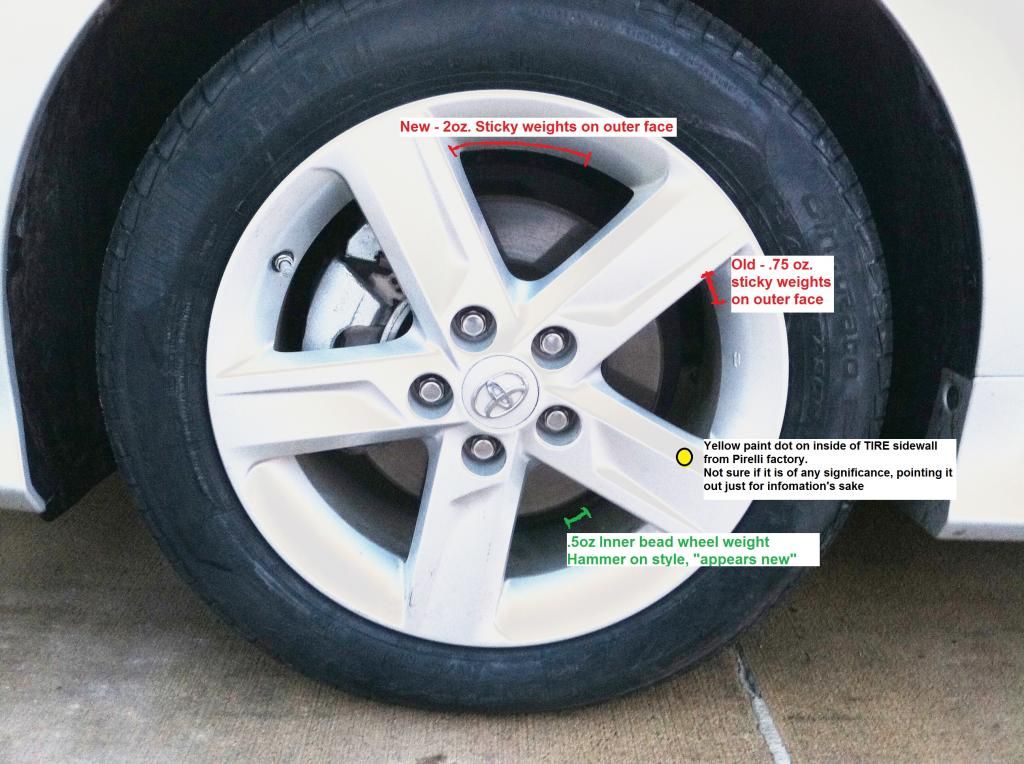Originally Posted By: SumpChump
I had a tire changed over to a new one (carry in) and I see that they left the old sticky weights on (3/4oz total) and balanced it adding 2oz of new sticky weights about 8inches circumference gap away. Is this bad practice? Shouldn't they have just "started fresh" or was there a reason to leave the old ones? Surely the old ones take all of ten seconds to gouge off.
My local Aerica's Tire always remove old weights when they mount a new tire, they also remove old weights when they re-balance and the first spin shows the tire is off balance.
Originally Posted By: Quattro Pete
Originally Posted By: Merkava_4
Won't the wheel take hammer weights?
Some people prefer their rims not look ugly.
Some newer wheels of the last 10-15 years don't take clamp-on weights.
I had a tire changed over to a new one (carry in) and I see that they left the old sticky weights on (3/4oz total) and balanced it adding 2oz of new sticky weights about 8inches circumference gap away. Is this bad practice? Shouldn't they have just "started fresh" or was there a reason to leave the old ones? Surely the old ones take all of ten seconds to gouge off.
My local Aerica's Tire always remove old weights when they mount a new tire, they also remove old weights when they re-balance and the first spin shows the tire is off balance.
Originally Posted By: Quattro Pete
Originally Posted By: Merkava_4
Won't the wheel take hammer weights?
Some people prefer their rims not look ugly.
Some newer wheels of the last 10-15 years don't take clamp-on weights.


